Fighting thermal bridges or how to make better buildings
| 05 February 2008 - Comments (1) | Construction |
 One of the key aspect of making low-energy buildings is the care given to the thermal insulation. That means using the right materials in the right thickness to provide the right thermal characteristics. But that alone is not enough. It also means not to leave any hole in the thermal insulation where heat would flow and defeat the purpose of the thermal insulation. Fighting those thermal bridges is essential in making excellent quality low-energy buildings.
It is an aspect that is always overlooked in Serbia.
One of the key aspect of making low-energy buildings is the care given to the thermal insulation. That means using the right materials in the right thickness to provide the right thermal characteristics. But that alone is not enough. It also means not to leave any hole in the thermal insulation where heat would flow and defeat the purpose of the thermal insulation. Fighting those thermal bridges is essential in making excellent quality low-energy buildings.
It is an aspect that is always overlooked in Serbia.
What is a thermal bridge?
Thermal bridges are localized regions in a building which display increased thermal losses. They can be caused by component geometry such as in the case of balconies or by the use of materials with a higher thermal conductivity such as in the case of aluminum window frames without thermal break.
Thermal bridges are most often created by the structure of the building, at the junction of walls and floors, at the junction of walls and roof, in the corners or around windows if they are not properly installed. Thermal bridges cannot be completely avoided but the goal is to bring their negative effects to a point that is tolerable and does not create any damage. In the following, we use the denomination thermal bridge for those that are not tolerable and must therefore be fixed.
Interior thermal insulation is well known to create many thermal bridges that could be completely avoided by doing exterior thermal insulation or by building with large clay blocks such as Wienerberger POROTHERM (figure below).
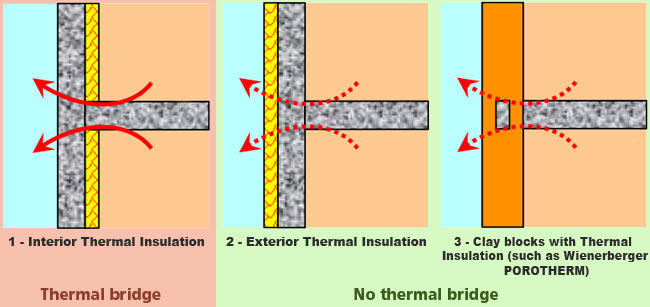
Thermal bridge created by the junction of the floor and the wall in case of interior thermal insulation. Note that in case of exterior thermal insulation or in case of use of large clay block such as Wienerberger POROTHERM, no thermal bridge is created.
Terraces and balconies, the most common source of thermal bridges
Balcony or terrace connections are the most common source of geometrical thermal bridges. Their reinforced concrete slab has a high thermal conductivity factor and cut through the thermal insulation layer. They cause a thermal outflow, leading to a drop in the inside surface temperature.
Regardless of the type of thermal insulation, balconies always create a thermal bridge that cannot be fixed easily (see figure below). It requires additional care, and therefore, additional cost. That is probably one of the reason nobody is taking care of them in Serbia.
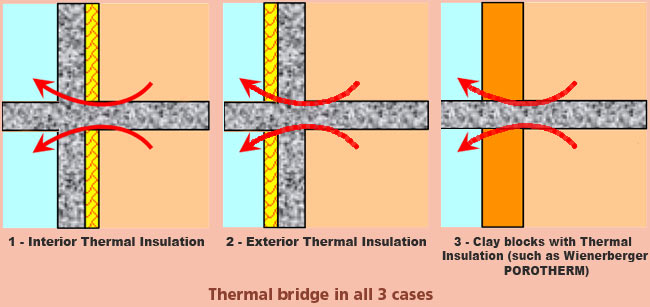
Thermal bridge created by a balcony or a terrace in all types of wall system.
Damaging effects of thermal bridges
Waste of heating energy
Because heat always flow through the easiest path from the heated space to the outside (the path with the least resistance), thermal bridges are the cause of important heat loss. The better the thermal insulation is and the more losses thermal bridges will cause. Those losses can represent a significant cost on the heating bill.
The heat loss created by the thermal bridge can be visualized using infrared thermographic imaging such as in the picture below.
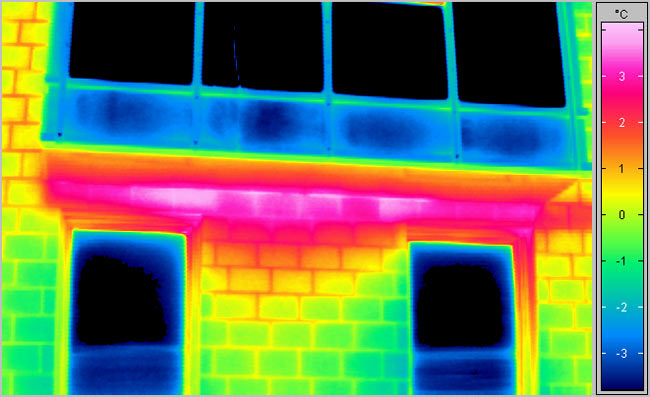
Infrared thermographic view of a leaking balcony caused by a thermal bridge (source infratec.de).
Risk of mould formation and condensation
In the area of a thermal bridge, the increase in thermal losses causes the inside surface temperature to drop significantly. As soon as the surface temperature drops below a given threshold, there is a risk of formation of mould. If the temperature drops even further to below dew-point, the moisture present naturally in the air of the room will condense on the cold surface in the form of droplets.
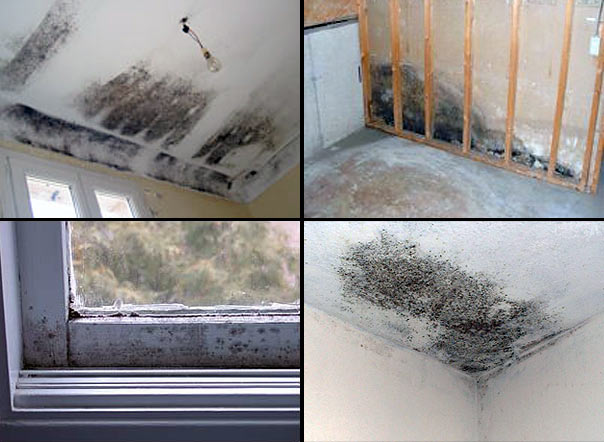
Mould formation caused by thermal bridges (top-left source Conseil Habitat Santé, top-right and bottom-right source MSI, bottom-right source Indoor Climate Experts).
Note that the formation of mould and condensation will be strongly influenced by the indoor air quality. Without a proper ventilation system to renew the air, humidity level will be higher and the likelihood of mould and condensation much greater.
Risk of health hazards
Once mould has formed in the area of a thermal bridge, it releases spores into the room. Those spores can cause a variety of health effects; from minor allergic reactions like irritated eyes, nose, and throat to increased asthma symptoms. That is because mould spores are allergens which can cause sinusitis, rhinitis and asthma. As exposure indoor is usually prolonged, there is a risk that these allergic reactions develop into chronic conditions.
Again, insufficient renewal of the indoor air will contribute to the formation of mould and will increase its negative effects on people. Sadly, poor quality constructions will cumulate flaws such as numerous thermal bridges and absence of proper ventilation.
Risk of structural damage
The formation of mould and condensation will lead to various damage on the building. That can affect the interior paint, plaster, wood or paper and slowly decay the structural elements.
Fixing thermal bridges
Yet, everything is available to prevent thermal bridges or to reduce their effects to an acceptable level. As we mentioned above, doing exterior thermal insulation or building with large clay blocks is the best way to prevent most of the thermal bridges to occur in the first place. For the remaining spots, essentially balconies and terraces, excellent products exist to completely solve them.
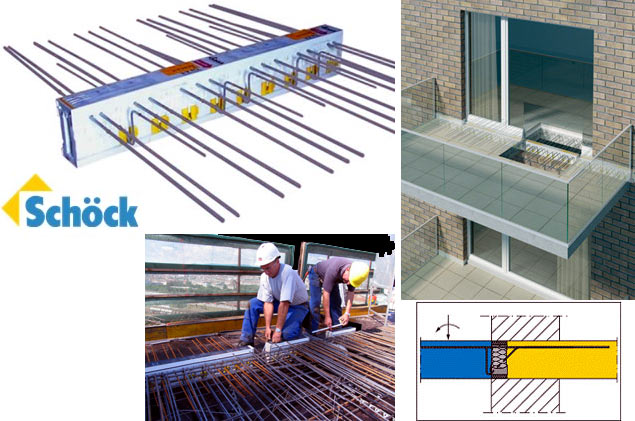
Schöck ISOKORB® for the prevention of thermal bridge on balconies or terraces (source Schöck).
AVI Thermokorb and Schöck Isokorb are 2 exemples. They are load-bearing thermal insulation elements which form a thermal break between the balcony and the internal floor. These elements are made specifically to transfer load and maintain full structural integrity. They associates polystyrene hard foam for the thermal break and stainless steel to maintain structural integrity.
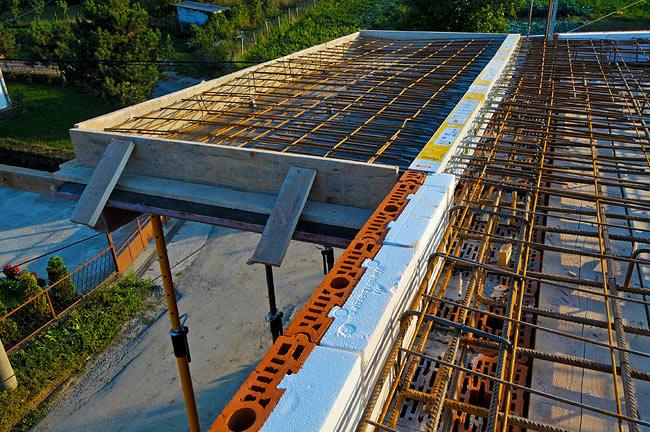
Schöck Isokorb used by Beodom on Amadeo (Photo Beodom).
Fixing obvious thermal bridges is a necessity in order to do quality constructions. Yet, because it is invisible in the finished building, and because the lack of people awareness on the problem, very few investors, if any, do so.
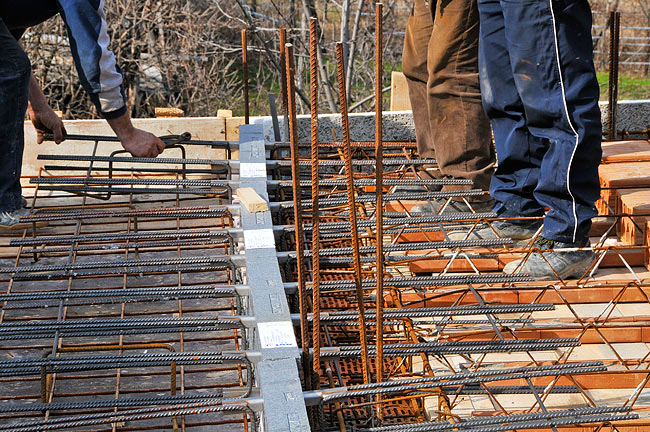
AVI Thermokorb used by Beodom on Amadeo II (Photo Beodom).
Conclusion
Thermal bridges constitute a genuine problem that cannot be overlooked in quality constructions. They can cause significant thermal losses and trigger mould to appear, causing potential severe health problems and damages on the building. Yet, excellent solutions exist in Serbia to prevent them. There is really no excuse today not to use those solutions, in residential buildings. With prices going well over 3.000€/m², how could an investor justify to leave thermal bridges untreated. Apart from ignorance and greed, we don't see why.







































06/02/2008
Stefano
1
Re: Fighting thermal bridges or how to make better buildings